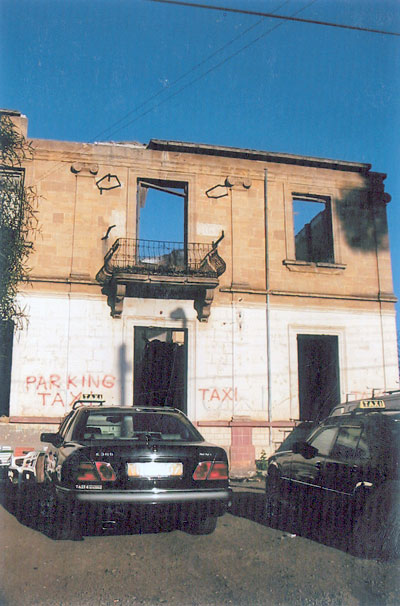Excerpta Cypriana: Introduction

This collection of writing from Cyprus had its ceremonial beginning on an evening in early May, 2008 when I organized a round-table or symposium in the ancient tradition of dialogue with wine and food. The occasion was the visit to Cyprus of five American poets and writers: Chris Merrill, David St. John, Natasha Tretheway, Jennifer Dobbs, and Debra Marquart. We endeavoured to bring together a diversity of writers and initiate mutual acquaintance as well as to introduce the American writers to the local literary scene. Making up an invitation list was very difficult. I was not thinking of bringing together the contemporary Cypriot literary canon if we can talk of such a thing, nor was it based simply on my personal preferences. There are others whom I love and admire who were not available, or who live abroad, and then there was the consideration of not wanting to exceed more than two dozen dinner guests and abuse the hospitality of the US Public Affairs Office who hosted the dinner. My intention in making up a guest list was to probe conjunctures and disjunctures of the locality of the island within and outside itself, and explore poetry and writing as an interactive form of agency, a battle of the imagination between inert substances and volatile forms of difference, between the local and the world, across generations, ethnic groups, sexual orientation, and literary languages, moving through the memory and forgetting of repatriates and immigrants, and of those dislocated within the island by a history of violence or simply by time itself. The poem “The Date-Palm,” written by the youngest contributor in this issue, intimates the hopelessly complex multicultural history of the island (Hellenic, Frankish, Venetian, Ottoman, Levantine, English). The island’s geographical position has long has made it a zone of indeterminate encounter between heterogeneous cultures and populations, ambiguating the cultural and political borders of “Europe” and “Asia,” and “the West” and “the East.” One might ask which of the Easts and which of the Wests?
This ambivalence is not new. It is amply evident to the reader who navigates the Excerpta Cypriana — an anthology of writing on Cyprus translated by Cobham, British Commissioner of Larnaca, and published in 1908. Including excerpts translated from various languages into English from ancient times up to the Ottoman rule and evoking the gaze of travelers, settlers, Cypriots or conquerors, the anthology evokes the cross-cultural gaze on the island through the millennia: Strabo speaks of the temple of Aphrodite, inapproachable and invisible to women; the Spanish Jew, Benjamin of Tudela, speaks of the heretic Cyprian Jews, Epicureans who profane the sabbath and keep holy that of Sunday; Neophytus, the 12th century hermit speaks of England, a country beyond Romania out of which a cloud of English came with their sovereign; Capodilista, a 15th-century Paduan gentleman, marvels at banana trees with fruit like cucumbers, yellow when ripe and very sweet of savor; and a document of Ottoman law professes tolerance toward Christians.
A century after Cobham’s work was published, I wondered as we talked around the table in the spring of 2008, what a new Excerpta Cypriana might look like now. This special issue is a brief and fragmented beginning for an updated Excerpta Cypriana. Looking back over the last century, one might recall that literary modernity in Cyprus came belatedly, with the advent of British colonialism in the 1880s, the decade that brought the first printing press (a gift from Alexandrian Greeks) and first newspaper (published in Greek and English) to the island. One might say that the combination of British colonialism and the Cypriot diaspora in Egypt, in Asia Minor and the Levant, with its own knowledge of and engagement with non-Western languages and cultures spawned a kind of colonial cosmopolitanism. These communities of the East Mediterranean Cypriot diaspora dissolved in the course of the twentieth century for various reasons, notably the Asia Minor disaster of 1922, the Suez crisis of 1956, and civil strife in Lebanon in the 1970s and 1980s.
The colonial cultural cosmopolitanism of Cypriot literary modernity subsequently gave way to the separate nationalisms of the two main ethnic communities. The power sharing after independence in 1960 soon came to violent ethnic clashes throughout the decade, and eventually came to war in 1974 when hard-line nationalists with the backing of the Greek military junta temporarily overthrew the government of the Republic, and Turkey responded by invading and occupying thirty-seven per cent off the island. With the forced dislocation of forty percent of the population to the south or to the north, the island was de facto partitioned into Greek and Turkish territories separated by a UN-controlled buffer zone. The south is now the remainder of the internationally recognized Republic of Cyprus, and the north is recognized as a separate Republic only by Turkey. Though nationalist separatisms have claimed a prominent role during the last quarter of the 20th century, it is noteworthy that the first President of the post-colonial Republic, Archbishop Makarios, played a leading role in the Non-aligned Movement, and less than half a century later, the Republic is a European Union member state as well as a Commonwealth nation. Since 1974, the north has imported thousands of Turkish settlers (many from among the impoverished population of Anatolia) while new wealth and EU accession has attracted immigrants to the Republic mainly from Eastern Europe and South and East Asia. To add to this, large numbers of Cypriots resettled on the island after studying and starting their careers abroad, bringing back with them their foreign-born partners. It is now estimated that about a quarter of the inhabitants of the island are foreign-born. I have therefore included in the selection three writers who have married Cypriots and settled on the island bringing up their children here, and who as literati, actively contribute to the cultural life of the island. Moreover, the partial opening on April 23, 2003, of the so-called ceasefire line, which divides north and south, added potential to intellectuals and artists seeking cultural dialogue and collaboration with those on the other side of the buffer zone, working to challenge established attitudes and forging a new poetics of the imaginary and the imagined as social facts, and ways of connecting with the creatively effective past(s) and the creatively effective Other and others. Navigating these pages the reader will, I hope, get an insight to the micro world of an island, journeying between the past and the pull of the moon as one of the poets evocatively suggests, reaching out across the globe, feeling its scars, fragmentations and divisions, seeking ways of being in the world.
Stephanos Stephanides
Nicosia, July 2009
6.3 Summer 2009
Excerpta Cypriana
EDITORIAL
STORIES & MEMOIRS
POEMS
- Theoklis Kouyialis: Mosphilo Jam & The Turkish Woman Bahire
- Elli Peonidou: In Autumn They Descend & Djelal of Ayios Theodoros
- Neşe Yaşιn: The Big Word & The Light Rising Inside Me
- Giorgos Moleskis: The Water of Memory & The Paternal Home
- Jenan Selçuk: The Date Palm & Decomposition
- Lisa Suhair Majaj: Asphodel & Olive Tree
- Paul Stewart: Wanting & The Garden
VIGNETTES & POEMS



